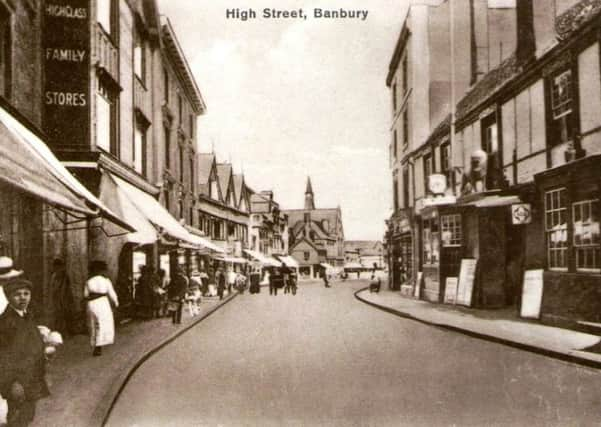Look Back with Little: Flicking through one of Banbury’s old newspapers tells a lot of stories


It cost 1d in old money or 1/8d per quarter by post. The circulation area was remarkable in that the Advertiser was said to be available in the counties embracing Oxford, Northampton, Warwick, Buckingham, Worcester and Gloucester, though it must be born in mind that county boundaries were very different at that time.
Commercial advertising instead of the latest area news filled the front page. In 1895 the traditional town centre was the heart of retailing. Especially important was the High Street with thriving businesses such as those of Mawles and Walfords. Mawles’ advertisement featured lamps and stoves, and claimed to be the sole agents for incandescent gas light whilst the latter highlighted their stock including the largest selection of cheap papers in Banbury.
Advertisement
Hide AdAdvertisement
Hide AdAn obvious target for Parsons Street shoppers was the Cash Drapery Stores where attractions were obvious and numerous from seasonal dresses to hats with fancy feathers. Unsurprisingly their punchline read, ‘we can offer goods at the lowest prices’.
The first two inside pages were devoted to national and international news, some sensational including an actor’s divorce and the trial of a French Marquis accused of murdering his stepson. Considerable space was reserved for displaying railway timetables. By the late 19th century Banbury had become a significant centre of services several of which are but a distant memory today. Cheltenham was accessible from Banbury and had four trains a day in each direction.
This line offered rail connections for such villages as Adderbury and Bloxham, although research has shown many people were still patronising village carriers. The long-since abandoned East West Junction route enabled Banbury people to reach Stratford on Avon by changing at Fenny Compton.
A generous portion of page 4 was devoted to short notices featuring activities such as property sales and social events, which might whet the appetite for participation. The previous Tuesday there would have been a substantial number of bidders at a sale at the Red Lion Hotel. The main attraction was a house in the Oxford Road which was always a desirable location. The hammer fell at £850 and interestingly the purchaser was Joseph Bush whose Cornhill Stores were advertised on the front page of this edition of the Advertiser.
Advertisement
Hide AdAdvertisement
Hide AdAn especially interesting notice concerned the way people and organisations donated food items to the Horton Infirmary. The house surgeon wished to thank worshippers at Deddington Congregational Chapel for four sacks of fruit, potatoes and other vegetables.
On the leisure front, a highlight of the time was Saturday Evening Penny Entertainments. It appears the second of these had just been held in the Cadbury memorial Hall in Bridge Street. The programme features vocalist performances and recitations. In a separate part of the paper a letter to the editor from an H Cubbon revealed the objective behind such entertainments – to provide a bright and healthy entertainment for the people who have few opportunities of enjoying such means of recreation, and at a small charge.
In the notice column was promise of a theatre production at the Exchange Hall in Banbury Market Place. The Advertiser described Miss Brown as ‘one of the most successful farcical comedies of recent times’ which had delighted audiences at the Vaudeville Theatre in London. Banbury theatregoers were to have the opportunity of watching Fred Cane’s Company from the Vaudeville perform ‘the greatest success currently running in London.
Although rival newspapers the Banbury Advertiser and the Banbury Guardian had much to offer the regular reader and a newcomer to the market town, which lived up to the reputation evolved during Queen Victoria’s long reign.